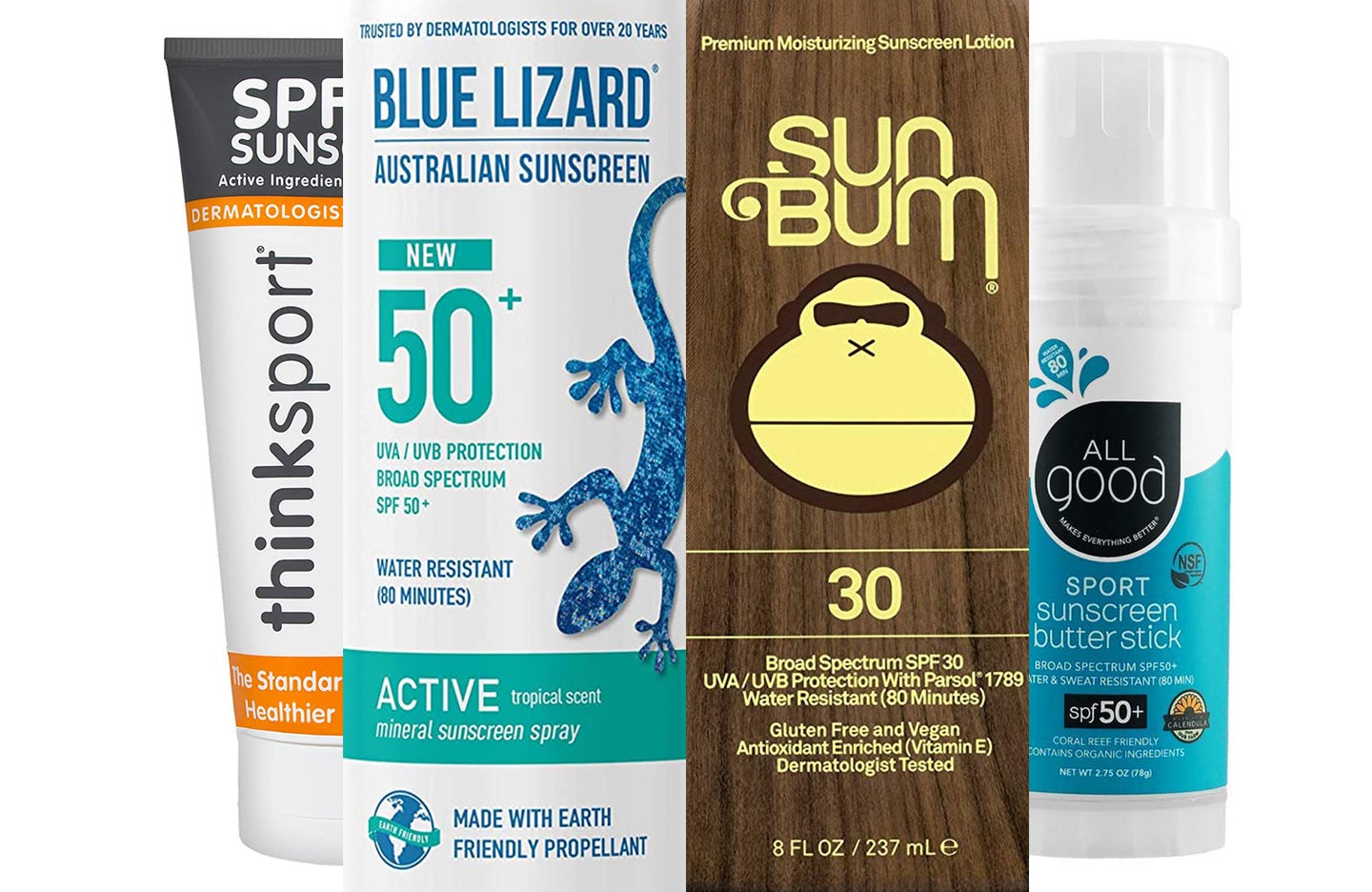
When it comes to being out in the sun, wearing sunscreen is non-negotiable—and if you care about the oceans, you’ll want to reach for reef-safe sunscreen. Damaging UV rays fall into two categories: UVA and UVB rays, both of which can cause skin damage, like early aging or burning, and can eventually contribute to skin cancer. But many sunscreen brands have a problem: they include chemicals that are bad for the oceans and the planet. Fortunately, in the last few years, a host of new reef-safe (also called reef-friendly) sunscreens have become available to consumers. These ocean-safe sunblocks are accessible, affordable, and work just as well as traditional chemical-based sunscreens when used correctly. We rounded up nine of the best reef-safe sunscreens on the market to ensure you’re protecting your skin and keeping the oceans oxybenzone-free.
- Best overall: ThinkSport SPF 50
- Best spray: Blue Lizard Mineral Active Spray
- Best high-SPF: Bare Republic SPF 100
- Best set: Coola Kit with carrying case
- Best for face/acne: Nécessaire: The Sunscreen
- Best solid sunscreen: All Good SPF 50 Stick
- Best tinted: Josie Maran Argan Daily Moisturizer
- Best SPF lip balm: Rubber Ducky Mineral Lip Balm
- Best budget: SunBum Sport Sunscreen
How we chose the best reef-safe sunscreen
I focus on outdoor travel and adventure, so I’m familiar with techniques to be a more sustainable and earth-friendly traveler. But perhaps more importantly, I have very pale skin and am an avid scuba diver, having dived on everything from Caribbean reefs to deep-water shipwrecks in Indonesia. I’ve been using reef-safe sunscreen for years, from budget brands from box stores to more expensive options bought at resort gift shops in a hurry.
In addition to my personal experience with reef-safe sunscreens, I looked at dermatologist recommendations and online reviews from other buyers of various ages, colors, genders, and skin conditions. I looked at the active ingredients for each sunscreen and researched how harmful they are to marine ecosystems, comparing different definitions and standards of what “reef-safe” means around the world. I also spoke with multiple reef and marine experts to get their insight on the best methods for keeping reefs healthy while still protecting your skin.
Things to consider when shopping for the best reef-safe sunscreens
Knowing what to consider when buying reef-safe sunscreens can be overwhelming, especially considering the various recommendations on what chemicals to avoid and understanding the differences between different blends and active ingredients—so we’ve narrowed down what to focus on to make shopping a bit easier.
Decide what reef-safe means to you
When buying a reef-safe sunscreen, the most important thing to consider is what standard of “reef-safe” you’re going to use. Unfortunately, there is no global or federal standard for what constitutes a reef-safe sunscreen. Hawaii’s congressional Rep. Ed Case introduced the Reef Safe Act of 2021, which would direct the U.S. Food and Drug Administration to come up with technical specifications for what the reef-safe label means. However, as of now, environmentally safe sunscreen means different things to different brands.
Hawaii was the first state to ban the two main harmful chemicals (oxybenzone and octinoxate), but other organizations like Save The Reef suggest that you should also rule out sunscreens with chemicals like octocrylene and homosalate.
Expect a thicker application
Sunscreens without those four chemicals will be mineral based. Mineral-based ocean-safe sunscreens (also called physical sunscreens) tend to be thicker and leave a thin white layer on your skin if not fully rubbed in because they act as a physical blocker, stopping the UV rays from touching your skin. Chemical-based sunscreens that meet Hawaii’s sunscreen standards likely will have some questionable ingredients but they’ll be easier to spread and less likely to leave a white filmy layer. Chemical sunscreens work by converting UV rays into something less harmful via a chemical reaction.
Pay attention to the instructions
Because of how mineral sunscreens work, it’s very important to keep a layer of it on your skin at all times, whether you can see it or not. As such, you’ll need to pay close attention to the sunscreen’s application instructions, most of which will advise applying no less frequently than once every two hours. You’ll also need to use a slightly thicker application (brands like ThinkSport advise 1 ounce to cover an average adult). You’ll need to rub it in more and should wait at least 30 minutes or so before going in the water after application.
Protection level
Each sunscreen has a sun protection factor (commonly written as “SPF”), which indicates the level of protection it offers. For instance, it would take roughly 50 times as long to get a sunburn while wearing an SPF 50 product as it would with no protection at all. Of course, even the highest SPF options still require proper application and reapplication for them to work as intended.
The best reef-safe sunscreen of 2022: Reviews & Recommendations
Best overall: ThinkSport SPF 50
THINK
Why it made the cut: A high SPF and water resistance make this a great buy for swimmers who always forget to reapply, and the recyclable and sustainable packaging go the extra mile in being Earth-friendly.
Specs
- SPF: 50
- Available formulas: 3-ounce cream, baby cream, or kids’ cream
- Active ingredient: Non-nano (small) zinc oxide
- Size: 6 oz
Pros
- Water-resistant for 80 mins
- Biodegradable/recyclable packaging
- Good for sensitive skin
- Vegan
Cons
- Thick consistency
- A little expensive compared to chemical brands
When it comes to the best reef-safe sunscreens, it can feel a bit like splitting hairs since so many are very similar. Most have a zinc-oxide base, are on the thicker side, and work in the same way (by physically blocking your skin from UV rays). So it’s impressive that ThinkSport manages to stand out among the similar competition.
Not only does this blend offer a high level of protection (an SPF of 50 allows half as many rays to hit your skin as an SPF 30), but it’s also good for sensitive skin. The formula is vegan, mostly organic, and has none of the more than 180 chemicals that could hurt the environment. It meets not only Hawaii reef-safe standards but also the much stricter standards laid out by nonprofits and areas with stricter bans, like the U.S. Virgin Islands.
ThinkSafe doesn’t stop at removing potentially harmful chemicals from its products, however. It also uses recyclable packaging and makes annual contributions to various like-minded nonprofit organizations. It’s a little pricey compared to a box-store sunscreen spray, so opt for the cream version to make it last as long as possible.
Best spray: Blue Lizard Mineral Active Sunscreen Spray
BLUE LIZARD
Why it made the cut: A spray-on reef-safe sunscreen with a minimal white residue and a smart bottle feature to remind you to reapply.
Specs
- SPF: 50
- Available formulas: Lotion, spray
- Primary ingredients: Zinc oxide
- Size: 5 oz
Pros
- Non-drying
- Easy application
- Less of a white residue
- Added oils to soothe skin
Cons
- Scent is subjective
- Bottle won’t last as long as a cream/lotion
A major complaint with reef-safe sunscreens is that their mineral-based ingredients tend to leave a white residue on one’s skin. Fortunately, this reef-safe spray sunscreen avoids that pitfall. While it does appear white as soon as it’s sprayed, the thinner layer means it quickly turns clear without any significant rubbing.
Blue Lizard—a sunscreen brand based in Australia, where the UV rays are some of the strongest on the planet—gives all their bottles and sprays another interesting feature. The bottle caps turn blue when exposed to UV rays, a feature intended to serve as a reminder. If you notice the change in color, reapply your sunscreen. Blue Lizard also skips the usual chemicals used for aerosol sprays, opting to use air pressure for the spray functionality rather than CO2.
Best high-SPF: Bare Republic SPF 100
Bare Republic
Why it made the cut: An ultra-high SPF means your skin stays protected for longer, and the chemical-based formula helps avoid the white residue that comes with mineral blends.
Specs
- SPF: 100
- Available formulas: spray, lotion, face-specific lotion
- Primary ingredients: Avobenzone, homosalate, octisalate, octocrylene
- Size: 5 oz
Pros
- High SPF
- Vegan, not tested on animals
- No white residue
Cons
- Some users report a fruity scent
- Contains ingredients on some non-reef-safe lists
If you’re taking skin protection seriously, you’ll want to take every step you can to protect yourself, which includes using the highest SPF you can find. SPF isn’t a measurement, exactly—it’s an estimate of how many times longer it’ll take you to get burned when you’re wearing it versus not wearing it. So, in theory, it’ll take you 100 times longer to burn if you’ve properly applied this SPF. (Of course, a proper application still means reapplying as needed.)
Aside from offering SPF 100 protection, this coral- and eco-friendly sunscreen also has a natural scent (from the fruit-based ingredients) that’s generally subtle and pleasant. This sunscreen is compliant with Hawaii Act 104, banning the sale of sunscreens with oxybenzone and octinoxate, but it does contain octocrylene, which may have a damaging effect on reefs.
Best set: Coola Kit with carrying case
Nordstrom
Why it made the cut: A travel-ready set with a face sunscreen, a lip balm, a body spray, and a post-sun serum to soothe skin, all tucked into a small secure case.
Specs
- SPF: 30
- Available formulas: n/a
- Primary ingredients: Avobenzone, octisalate, octocrylene
- Size:
- Classic Body Sunscreen Spray: 2 oz
- Classic Face Sunscreen Lotion: .85 oz
- Lip Balm: .15 oz
- After Sun Lotion: 2 oz
Pros
- Includes extra products to protect skin
- Comes with travel bag
- Lightweight, easy on pores
Cons
- Meets only Hawaii reef-safe standards (contains octocrylene)
If you’re looking for a small reef-safe sunscreen set that meets TSA standards, you’ll want to consider using Coola products, which are among buyers who prefer plant-based products. The kit comes with four travel-sized products: an organic face sunscreen, an after-sun lotion to calm redness and overexposure, a small SPF spray, and a non-tinted hydrating lip balm.
All four products are vegan and meet Hawaii’s reef-safe standards. The three SPF products are hydrating and light so they won’t leave you feeling oily or sticky. The after-sun lotion has antioxidants and anti-inflammatory ingredients. It’s ideal for use in the evenings to calm any redness you do notice, ensuring your face feels hydrated and even again the next morning.
The kit is great for travel and the sizes are all well below the TSA carry-on maximums. The only downside is that while the products lack oxybenzone and octinoxate, they do contain octocrylene, which some organizations also have on their harmful ingredients lists. While the actual SPF product uses primarily organic and natural products that won’t irritate the skin (such as fruit oils and plankton extract), it’s the first two products that truly ensure against acne. Use the facial cleanser once you’re out of the sun to remove all irritants from your pores, and use the skin serum before going to bed to soothe any dryness or redness from being in the sun. It comes with a carrying case for travel.
Best for faces: Nécessaire: The Sunscreen
sephora
Why it made the cut: This is the best reef-safe sunscreen for faces to protect your skin and even reduce wrinkles, but it won’t clog pores or get overly greasy.
Specs
- SPF: 30
- Other available formulas: None
- Primary ingredients: Non-nano zinc, hyaluronic acid, and niacinamide
- Size: 1.7 ounces
Pros
- Includes hyaluronic acid to reduce wrinkles
- Meets very high environmental standards
- Unlikely to clog pores
- Climate-neutral company
- Easy-use pump applicator
Cons
- Expensive
Necassaire: The Sunscreen has quite the list of adjectives to justify the higher-than-average price for a reef-safe sunscreen for face protection. It’s hypoallergenic, non-comedogenic (won’t block pores), free of ingredients like phthalates and formaldehyde, and meets Sephora’s very high standards for being considered “Clean + Planet Positive.” It doesn’t include any of the ingredients on the Protect our Reefs banned list, but this face sunscreen does have natural additives like Vitamin B3 to help strengthen skin and algae, which add collagen and helps fight dry skin.
Ingredients aside, this reef-safe face sunscreen has a leak-proof pump applicator and can be used as a standalone product or blended with a liquid foundation. Because it’s a mineral sunscreen it does leave a bit of a very thin white layer, but most buyers report that it’s minimal and easy to get rid of with just a little extra rubbing.
Best solid sunscreen: All Good Sport Sunscreen Stick
All Good Makes Everything Better
Why it made the cut: An easy-to-carry solid sunscreen that won’t melt with extra ingredients to prevent drying.
Specs
- SPF: 50
- Available formulas: Butter, lotion
- Primary ingredients: Non-nano zinc oxide
- Size: 2.75 ounces
Pros
- Easy to carry
- No scent
- Additional coconut oil and jojoba oil to prevent dryness
Cons
- Rolls on thick
Sometimes, you don’t want to risk carrying a bottle of sunscreen around in your bag or luggage—it’s never a happy surprise when you reach into your backpack to find the cap was loose on your sunblock. So if you need to carry just a small amount of sunscreen with you, consider packing the AllGood SPF stick, which offers AllGood’s highly rated SPF stick. Though it’s less than 3 ounces, it seems to last a while and is quite easy to carry even when paddleboarding or mountain biking.
One of the best things about this particular reef-safe sunscreen stick is that it’s nearly melt-proof, provided you don’t leave it exposed in direct sunlight. Because it’s a stick it does go on a bit thicker, so be prepared to massage it into your skin if you want to avoid the white layer common with mineral-based sunscreens.
Best tinted: Josie Maran Argan Daily Moisturizer
sephora
Why it made the cut: A light, hydrating SPF formula with reef-safe ingredients and extra soothing oils to help prevent dryness in the sun, plus a bit of extra glow for your cheeks.
Specs
- SPF: 47
- Available formulas: N/a, though there’s a body butter (without a tint)
- Primary ingredients: Zinc oxide, titanium dioxide, Argan oil, SunBoost ATB
- Size: 2 oz
Pros
- Adds subtle brightness/warmth
- Includes soothing/healing ingredients
- High SPF
Cons
- Pricey
- Looks best with warm undertones
If you’re used to wearing a BB cream or tinted moisturizer with sunscreen at the beach, consider swapping that out for this ocean-friendly tinted option instead. It’s similar to a moisturizing BB cream, except that its sun-protective ingredients won’t harm coral. It’s a great option for buyers who aren’t quite ready to leave their usual makeup products at home in tropical areas but also don’t want those harmful chemicals to contribute to coral bleaching and ocean decline.
The Argan Daily Moisturizer Tinted Protect + Perfect is SPF 47. It’s also free of synthetic fragrances and formaldehyde, and has antioxidants like argan oil and green tea—so it helps protect sensitive skin from getting dried out and wind burned in the sun. It’s a “one shade fits all” product, offering a warm glow for women and men regardless of skin color.
Best for lips: Rubber Ducky Mineral Lip Balm
Rubber Ducky
Why it made the cut: With an SPF rating of 30 and all-natural ingredients safe by both Hawaii reef standards and narrower environmental standards, this is a highly rated, affordable lip balm to keep in your beach bag.
Specs
- SPF: 30
- Available formulas: Only as a balm
- Primary ingredients: Zinc Oxide
- Size: .15 oz (pack of three or four)
Pros
- Higher SPF than most lip balms
- Water-resistant
- Added beeswax and shea butter
- Pleasant scent, no taste
- Great price
Cons
- Application less smooth than with chemical lip balms
It’s not unusual to find lip balms with SPF properties, but most options only offer SPF 15. It’s harder to find one with an SPF as high as 30—and even more unusual to find one that uses reef-sage ingredients to create that level of sun protection. It’s petroleum-based, so it glides on like a “regular” lip balm, rather than having the thicker application associated with some reef-safe sunscreens. It’s also water-resistant, so you won’t wash it off if you apply and then drink water (or order a tropical cocktail) a minute later. In fact, that’s why the brand is called “Rubber Ducky.” Its water resistance makes water roll off your skin (or lips, in this case) like water off a duck’s back.
As with many mineral-based sunscreens, it does leave a bit of a white tint. So you may want to rub it in a bit after each application. It doesn’t need to be your daily SPF lip balm (though you should have some kind of SPF lip balm every day), but it’s a good buy to throw in your beach bag or carry-on luggage if you’re finally taking that coastal trip you’ve been planning.
Best budget: SunBum Original SPF 30
Sun Bum
Why it made the cut: The standard bottle is two ounces larger than most sunscreens, and the non-mineral-based formula rubs on clear without the usually white cast from zinc oxide.
Specs
- SPF: 30
- Available formulas: Spray, face lotion, solid stick, lip balm
- Primary ingredients: Avobenzone, homosalate, octisalate, octocrylene
- Size: 8 ounce
Pros
- Affordable
- Good for sensitive skin (non-oily)
- Hypoallergenic
- No white filmy layer
Cons
- Contains some questionable ingredients
If budget is your biggest concern when it comes to buying a reef-safe sunscreen, SunBum’s original blend may be a good choice. It’s the best reef-safe sunscreen value that meets Hawaii’s current reef-safe standards by being free of octinoxate and oxybenzone, but it does contain a few other chemicals some environmental groups say to avoid. However, it’s certainly at least better than using traditional sunscreens. And it’s hard to beat the value. The 8-ounce bottle is usually priced around $15, which works out to about $1.90 per ounce. Compare that to smaller 5-ounce bottles priced closer to $19 and it’s a clear saving.
If you’d like to go the extra mile and buy a SunBum product without chemicals like homosalate or octisalate, opt for items from the SunBum mineral-based line. There are lotions in SPFs of 30 and 50, plus a spray and lip balm, all free of any questionably damaging ingredients. Of course, it’s a bit pricier per ounce; a 3-ounce bottle is usually priced at around $15.
FAQs
Q: How much does reef-safe sunscreen cost?
Reef-safe and Hawaii-safe sunscreens do cost a bit more than a mass-produced chemical sunscreen but it’s not drastically more expensive. And the shared human cost of destroying coral reefs will be far greater. Expect to pay around $12-$15 for a tube of reef-safe sunscreen, though, of course, the coast varies greatly based on where you are. It’ll cost a lot more to buy it at a hotel gift shop in Hawaii than it will if you buy it online in advance.
Q: How do I know if sunscreen is reef-safe?
Reef-safe generally means that it lacks two well-known chemicals, oxybenzone and octinoxate, both of which lead to coral bleaching—one of the final steps before coral dies. Dead coral means no fish and no reefs and, without reefs, the entire ocean food chain collapses. So while it may seem like one person’s sunscreen choices don’t matter, they do on a grand scale. And since Hawaii alone welcomes nearly 10.5 million visitors per year, all those chemicals in the oceans quickly add up.
Q: What does reef-safe sunscreen help protect?
Reef-safe sunscreen helps protect reefs, right? But what does that mean, exactly? Is it to help the creatures on the reef? The coral itself? I asked an expert to weigh in.
“Reef-safe and reef-friendly” are the terms used to qualify sunscreens that do not contain harmful chemicals for the ocean and, especially, for corals. “Mineral, UV-blocking ingredients like [zinc] oxide are harmless to corals,” says Emeline Bouchet, resident marine biologist at Maldives’ Velaa Private Island (home to the largest coral restoration project in the Indian Ocean).
“Corals are animals from the phylum of Cnidaria and live in colonies where each individual is called a ‘polyp’. A polyp has a mouth for feeding and, while feeding, corals can absorb the chemicals contained in the ocean through our sunscreen. Those chemicals can disturb the growth and reproduction and eventually the survival of corals.
“Twenty-five percent of marine life in the ocean depends on corals. Sunscreens have a major impact on corals and indirectly on all the marine life depending on them, but the chemicals are also directly absorbed by the fish when breathing.”
So, essentially, introducing chemicals into the ocean poisonous coral (which is alive) and, in turn, hurts all the marine creatures that rely on reefs.
Q: Are mineral sunscreens better than “normal” sunscreen?
Mineral (sometimes called physical) and chemical sunscreens do an equally effective job of protecting your skin when properly applied (and proper application means frequent reapplication). So, in terms of preventing sun damage, mineral sunscreens aren’t better (or worse) than “normal” sunscreens. But if by better you mean better for the environment, then the answer is a resounding “yes.”
Bouchet says that corals are very sensitive and it doesn’t take much to negatively impact them. “Corals are found in less than 1% of the oceans. We are living in a period called ‘the Anthropocene,’ in which most of the ecosystems on Earth are impacted by human activity—and the coral reef is one of them.” And coral bleaching, which is partially caused by the chemicals in non-reef-safe sunscreen, is a major contributor to reef decline.
“Bleaching means corals are expelling the algae living in their tissue,” says Bouchet. “And without those symbionts, corals have a limited chance of survival. For example, in the Maldives, mortality has been recorded after a few weeks of exposure [to harmful chemicals].”
Of course, chemicals in sunscreen aren’t the only threat to reef health—Bouchart points to the rise in global temperatures and the damage from producing and discarding plastics—but that’s all the more reason to wear reef-safe sunscreen options. Anyone who enjoys the beach, ocean, or marine world should make the small effort to use reef-safe sunscreens as the ocean already has enough health challenges without adding more harmful chemicals to the mix.
Q: Do you need to use reef-safe sunscreen in an area without reefs?
You should consider using reef-safe sunscreen even if you’re nowhere near a reef, advises Kathy FitzPatrick, the head coastal engineer in Florida’s Martin County. Or even better—use UPF clothing as your first barrier against UV rays.
“Since the science on what sunscreen is truly ‘safe’ is still emerging, the very best thing to do is to cover up with sun shirts, hats, and the like to reduce the amount of any chemicals you introduce into the water,” says FitzPatrick. “Beyond swimming on the reefs, when you shower, chemicals that are washed off can make their way to the ocean.”
FitzPatrick compares reefs to the rainforests of the ocean owing to their importance to the marine ecosystem—and to humans, especially in coastal areas. That’s part of the reason she advises doing everything possible to protect them, even if it seems as minor as one person’s sunscreen choices. “Reefs help protect coastlines from storm waves and have been found to contain potentially lifesaving pharmaceutical compounds. Like many other natural systems, oceans and coral reefs, in particular, are facing a multitude of stressors and degraded water quality from pollutants is one of them.”
Final thoughts on the best reef-safe sunscreen
Ultimately, unless you’re in a place with legislation limiting certain sunscreens, the choice to use reef-safe sunscreen or not is up to the buyer. While there are some downsides to most reef-safe sunscreens—primarily that they cost a bit more and can leave a white layer if not rubbed in thoroughly—they’re also the far more ecologically responsible choice. As long as the slightly increased cost isn’t a factor, most buyers should consider working one or two of the best reef-safe sunscreens into their summer routine, especially when they’re spending time near tropical shorelines.
The post Best reef-safe sunscreen of 2022 appeared first on Popular Science.
from Popular Science https://ift.tt/71Lhwdo

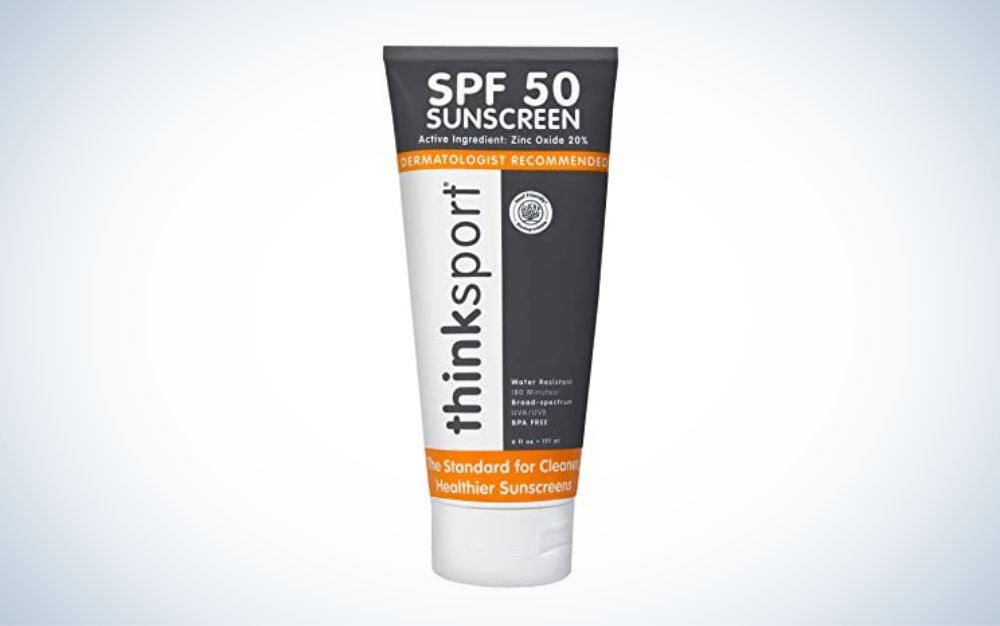
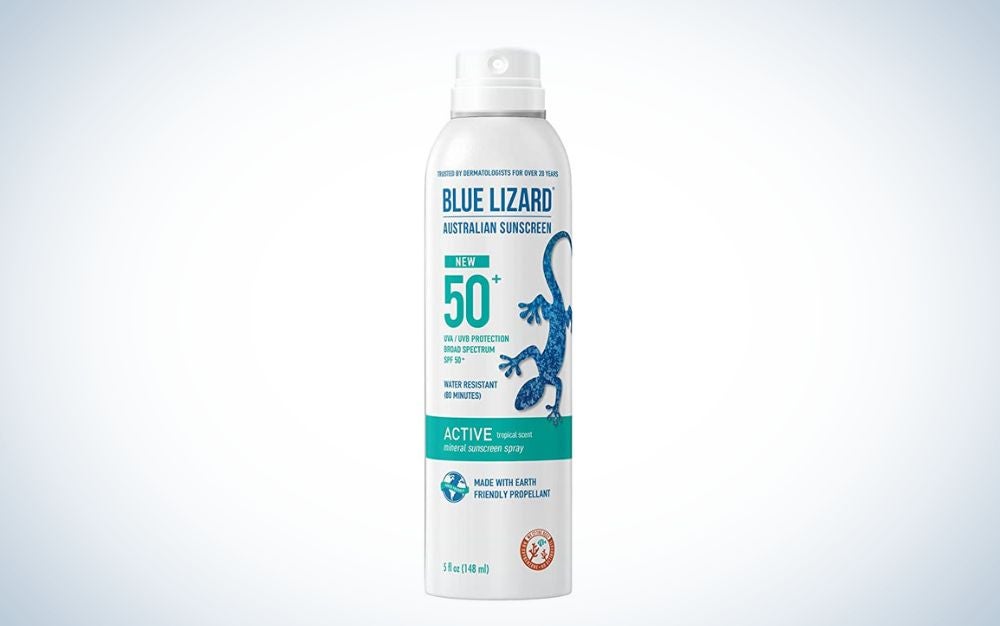
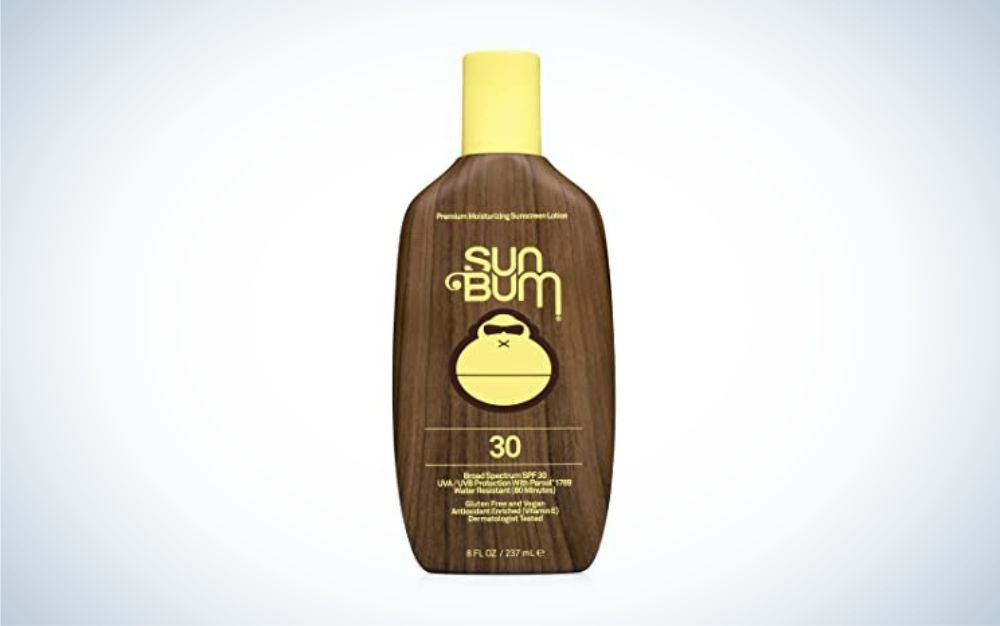
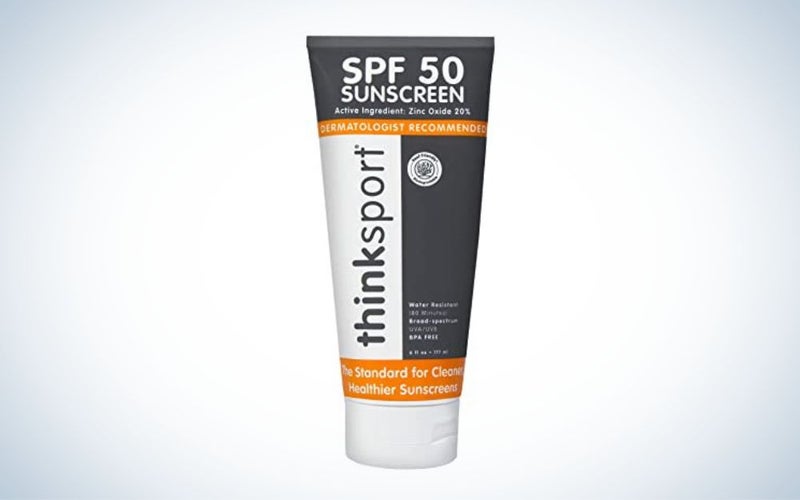
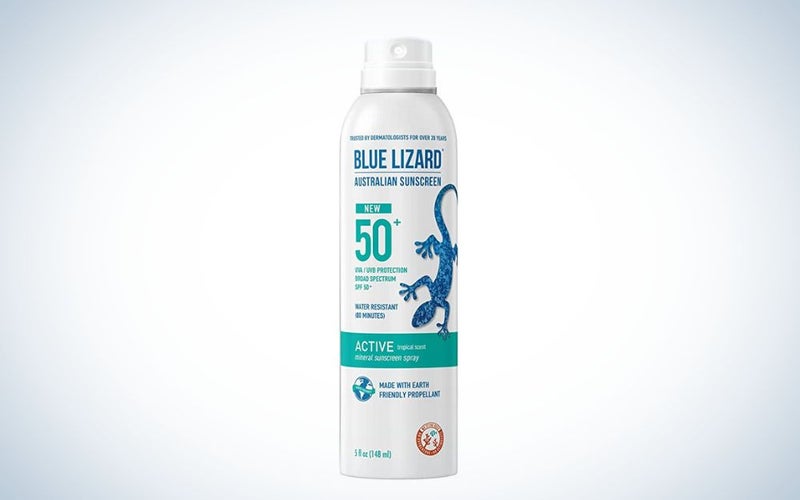
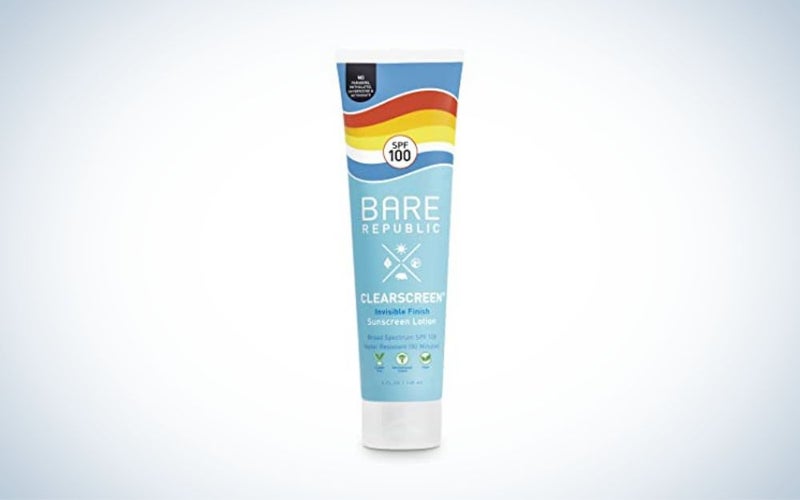
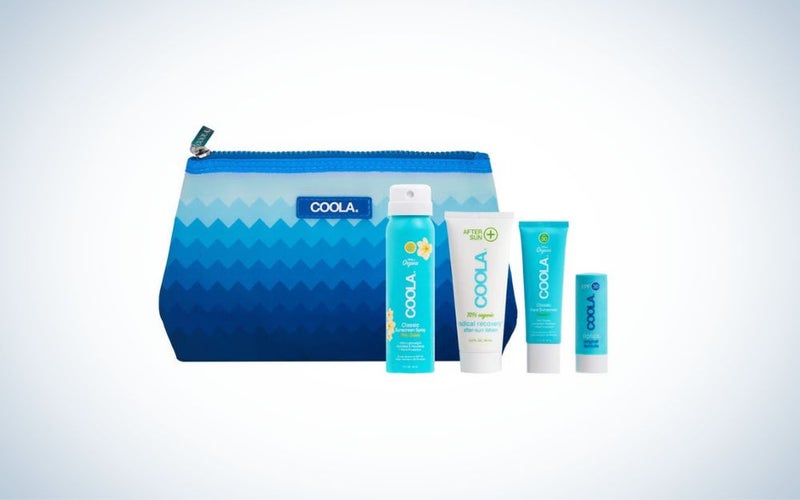
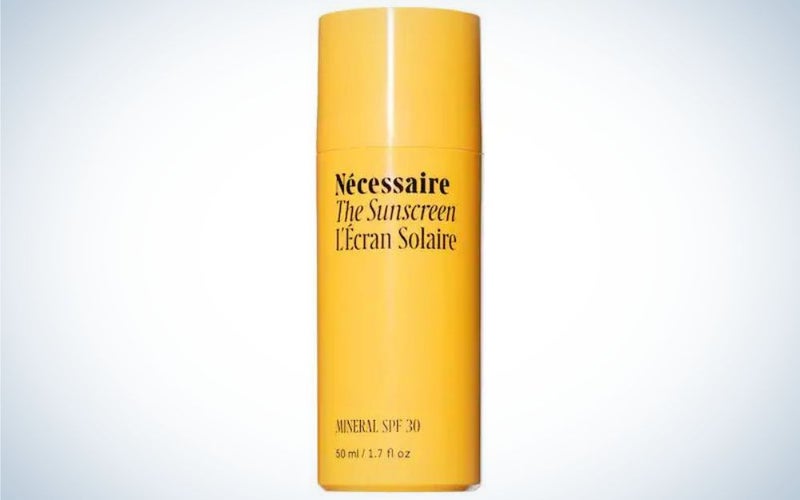
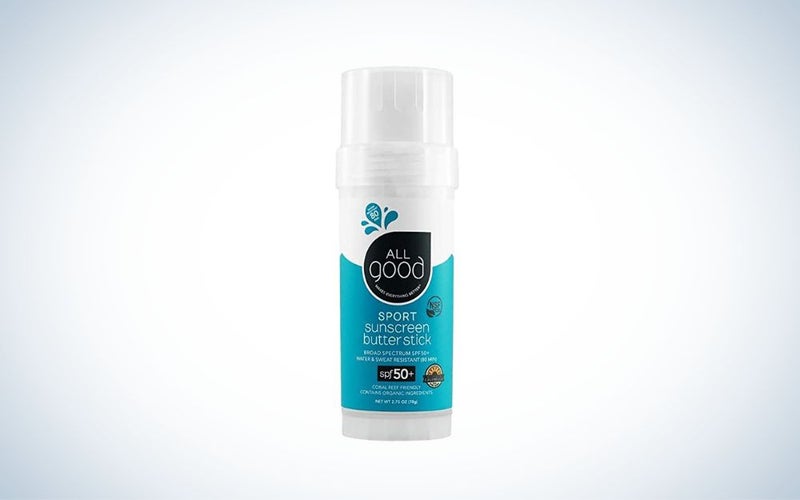
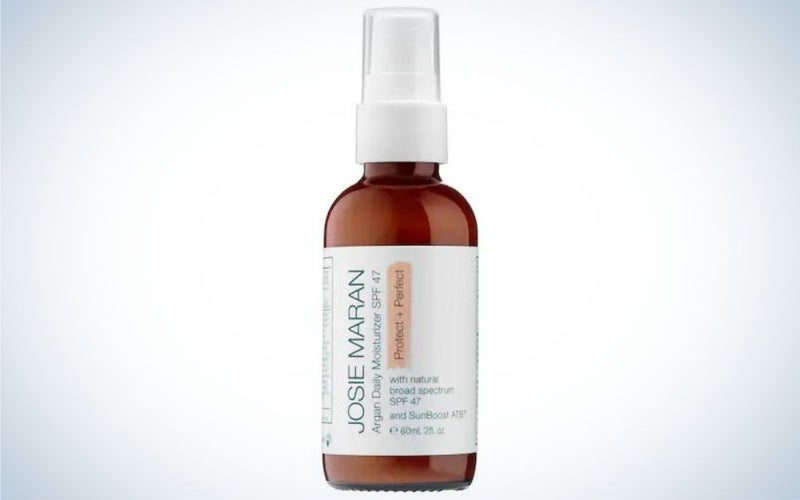
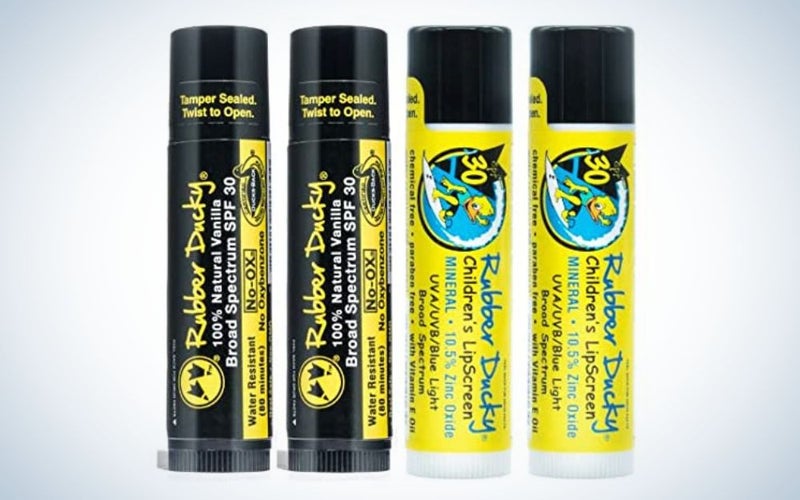
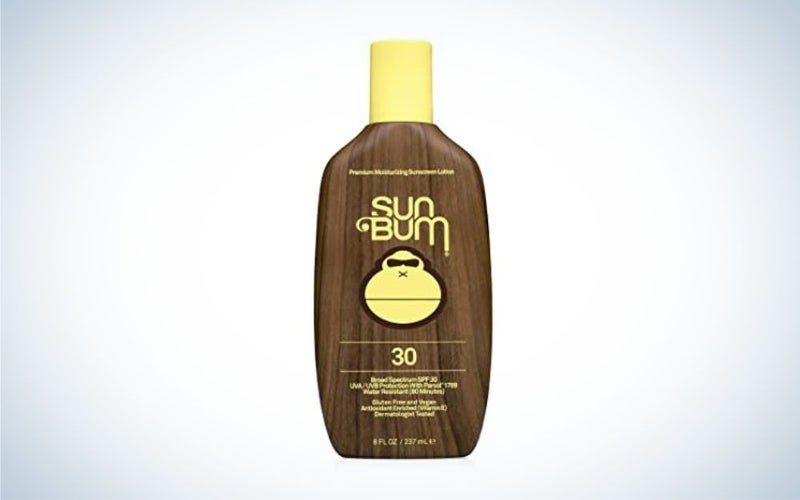


0 Comments